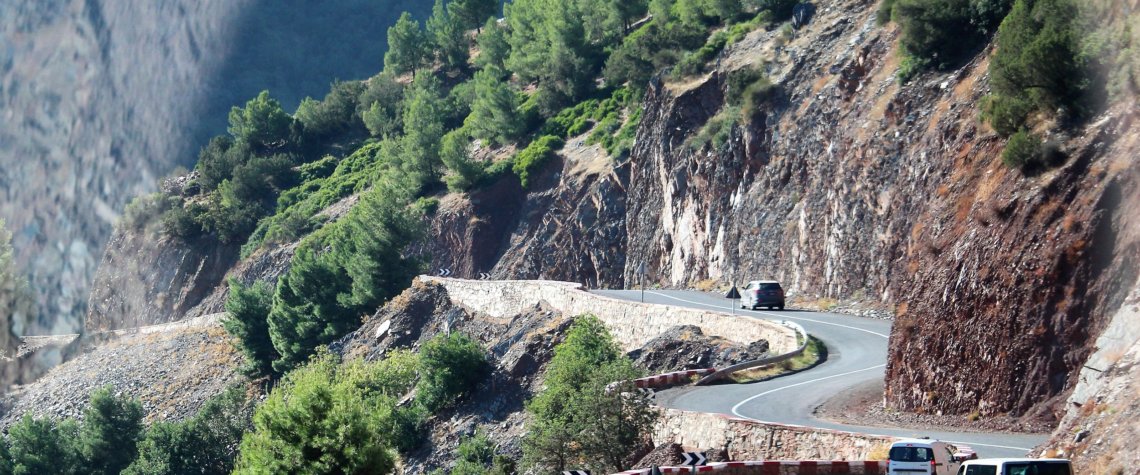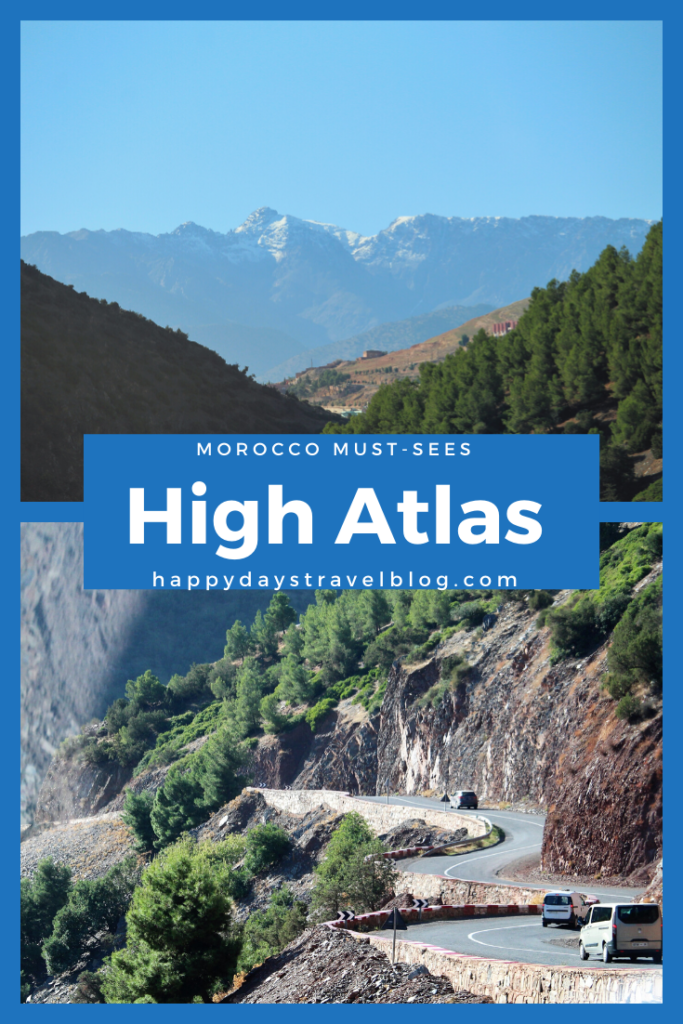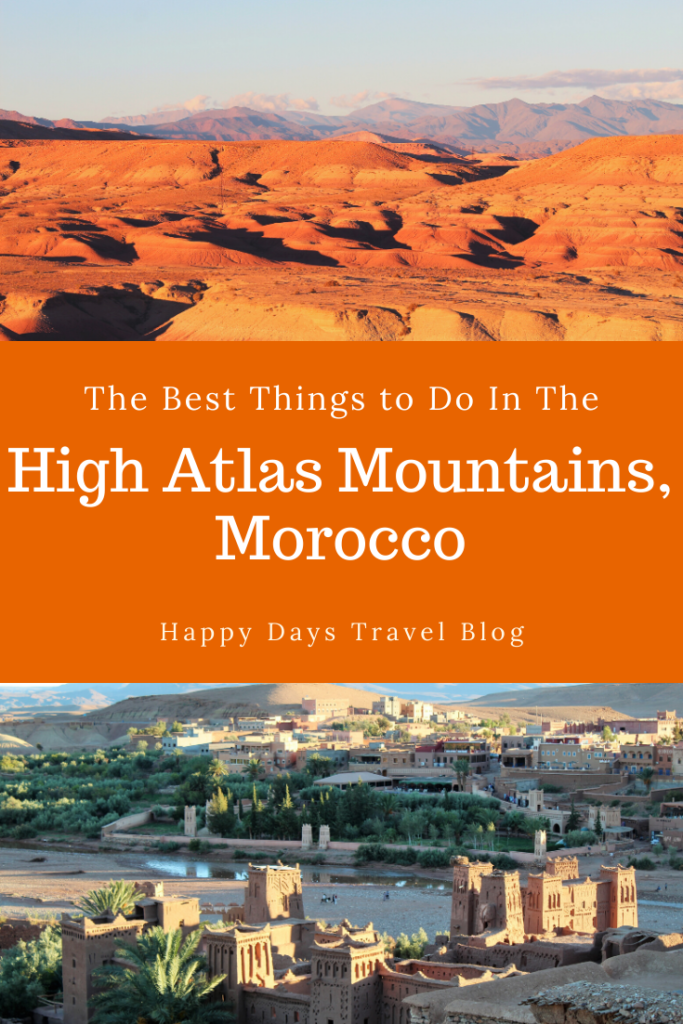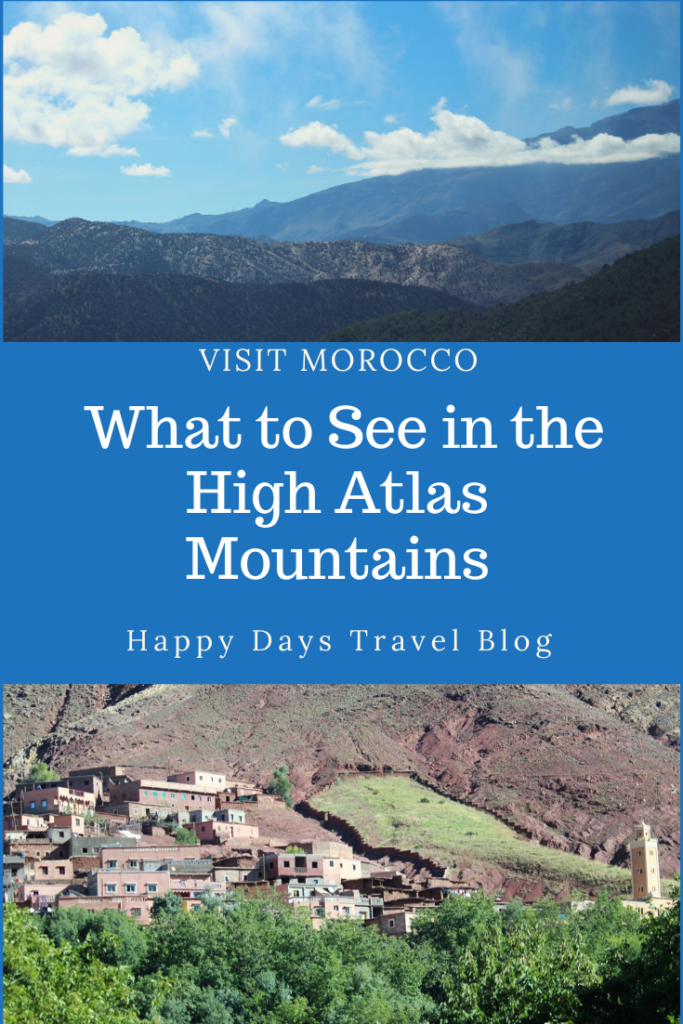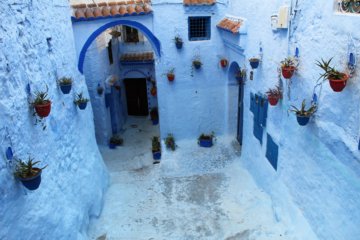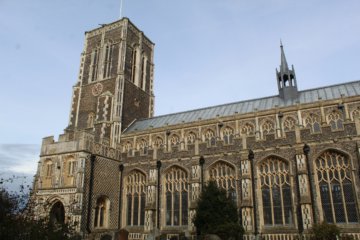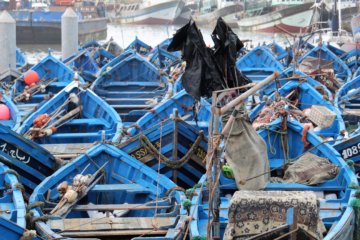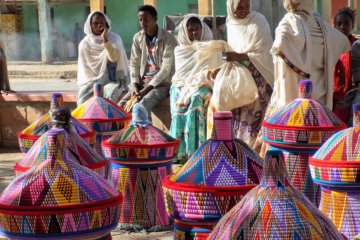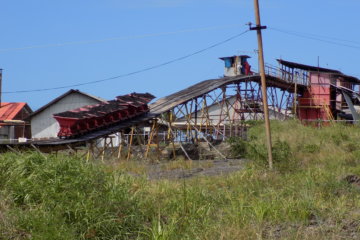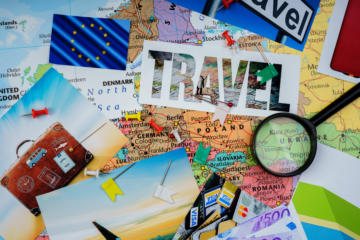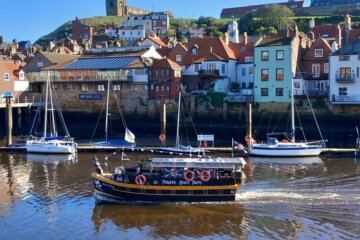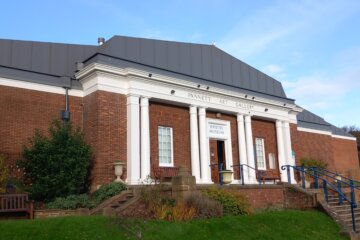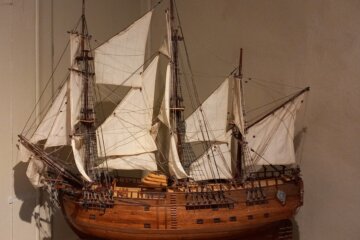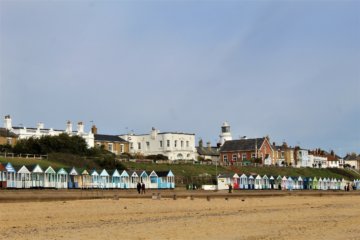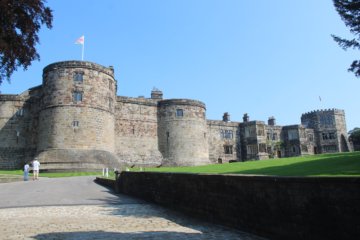Morocco is a country of contrasts. Yes, I know it’s a cliché, but it’s true! From the warm waters of the Mediterranean to the frenetic cities of Marrakech, Fez, and Casablanca, and on to the other-worldly Sahara Desert, Morocco has it all. It also has the spectacular Atlas Mountains. Some visitors spend weeks at a time trekking in this area. Others come in winter for the skiing. Whether or not you’re a hiker or a winter sports enthusiast, whenever you visit Morocco, I suggest you take the time to explore the country’s mountainous region. It’s possible to visit on a day trip from Marrakech, but, if time allows, you should spend two or three days here. We did this as part of our Intrepid tour around the country. In this article, I will describe the best places to see and things to do in the High Atlas Mountains, Morocco.
In this article
The Geography of the High Atlas Mountains
The High Atlas is North Africa’s highest mountain range, running diagonally across Morocco for almost one thousand kilometres. It encircles Marrakech to the south and east and stretches from the Atlantic coast just north of Agadir to Khenifra in the northeast. Its peaks form a weather barrier between the mild Mediterranean climate to the north and the hot, dry Sahara to the south. Local Berbers call it ‘Idraren Draren’ which means ‘mountains of mountains’.
At the highest altitudes in the mountains, snow falls regularly from September to May. All year round, rivers flow northwards towards Marrakech, creating a network of fertile valleys where dates, apples and walnuts are grown.
The Road into the High Atlas from Marrakech
We left the hustle and bustle of Marrakech just after sunrise to drive up into the High Atlas Mountains. It wasn’t long before the city was behind us and we started to climb into the foothills. The scenery changed. Lush green fields replaced the concrete. In the villages we drove through, local people were busy gathering olives and apples.
Our first glimpses of the snow-capped mountains were breathtaking, and so unexpected having just recently left the heat of Marrakech.
We drove past Kasbah Tamadot, the luxury hotel owned by Richard Branson and his wife, Eve. Apparently, celebrity guests arrive in this remote location by helicopter and never leave the resort until they’re flown out at the end of their stay. Our guide, Hamid, told us that local people don’t mind, though, as the hotel employs a lot of them and Branson is very generous in his support of neighbouring communities.
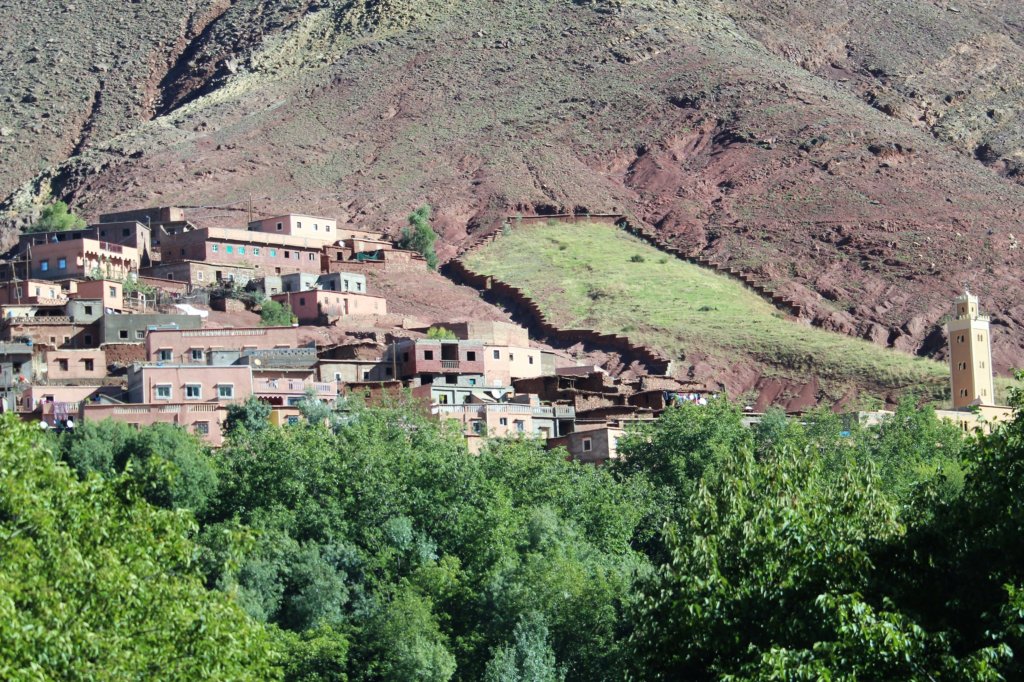
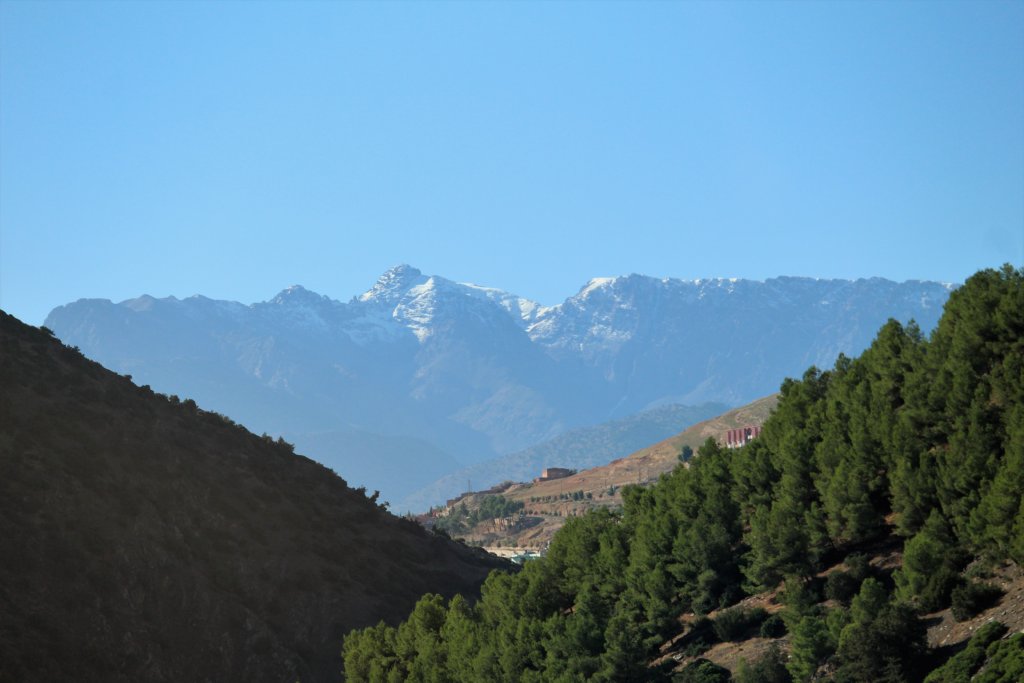
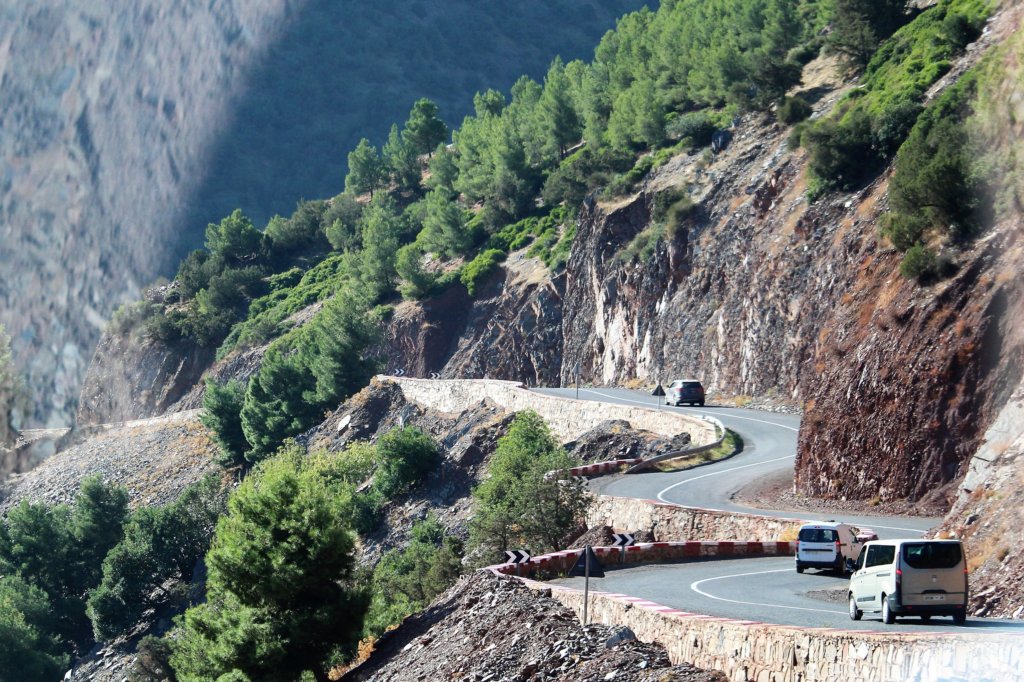
Imlil – the Gateway to the High Atlas Mountains
The small town of Imlil (population just over 5000) has established itself as the main trekking base for those intrepid hikers looking to ascend Jebel Toubkal. At 4167 metres, this is the highest mountain in North Africa. Everyone in Imlil is involved in the trekking business in some way, whether as a guide, a mule owner transporting bags up the mountain, or a hotelier or restaurateur.
If, like my group, you are not here for serious climbing, Imlil is also the starting point for an easier walk up to the village of Aroumd. We left our minibus in the town, stored our main luggage in a local restaurant and only took with us what we needed for an overnight stay in the mountains. We had the option to have a mule carry our day packs, or even ride on one ourselves if we didn’t feel up to the walk. Only one of our group chose to ride. It was a tough walk, especially as we ascended and the temperature dropped and the air became thinner. I was definitely bringing up the rear, but I’m still glad I walked rather than burdening a mule, especially as the guy leading the animal was about seventy-five!!
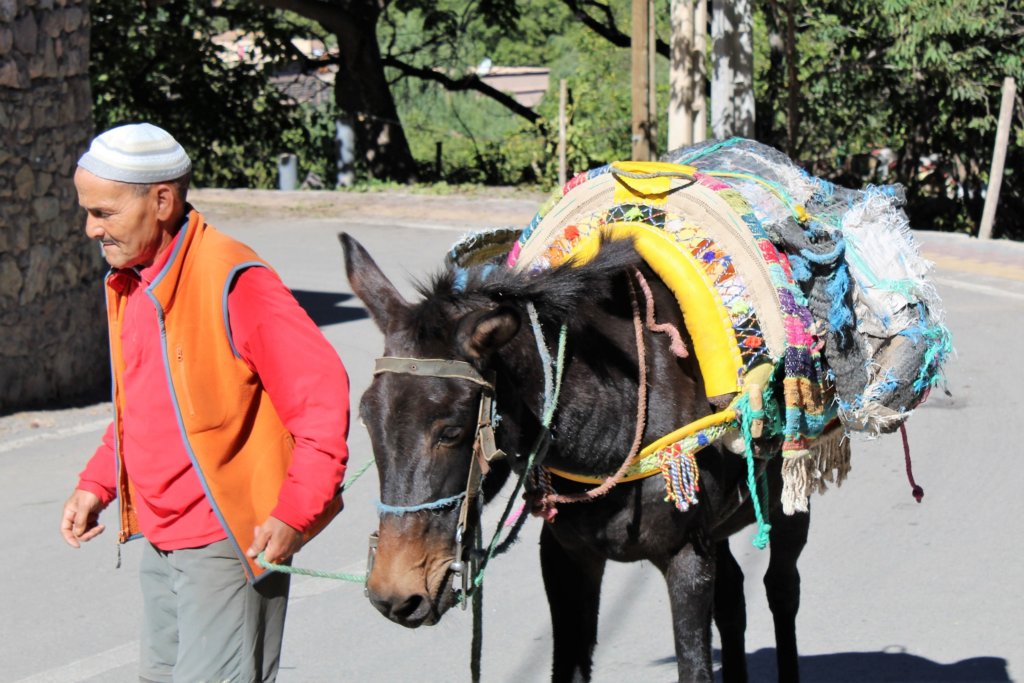
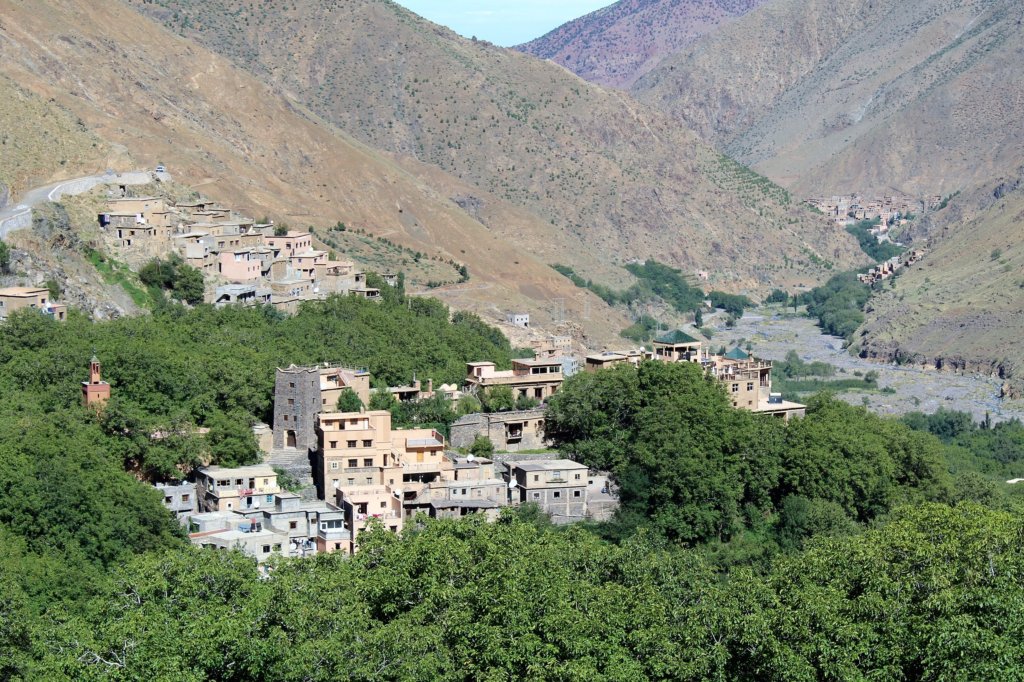
Aroumd
An uphill walk of around three kilometres brought us to the Berber village of Aroumd. This small settlement has become a base for walkers who want to escape the crowds and do some slightly less challenging hikes.
Our accommodation was in the Gite le Toubkal Armed, a family-run guesthouse with dormitory rooms and shared bathrooms. It was basic but clean and comfortable. Our group were the only guests, so Mark and I had a three-bed dorm to ourselves.
On arrival, we were served a very welcome glass of sage tea and some homemade biscuits in the lovely courtyard in the centre of the gite. Almost immediately afterwards, our hospitable Berber hosts brought us a delicious lunch. I don’t know if it was the mountain air, but the food was amazing – it really made our tastebuds sing! We shared a huge plate of colourful crudités. This was followed by Berber omelette (spicy eggs baked in a tagine), rice, chicken skewers, lentils, and fresh flatbread still warm from the oven. We finished the meal with segments of juicy oranges.
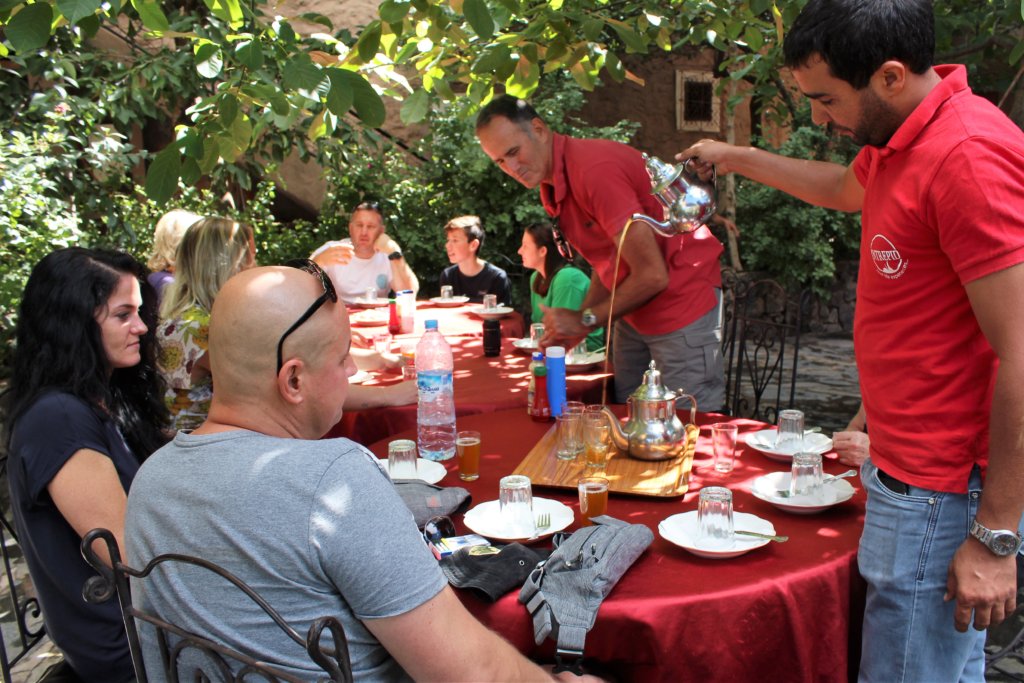
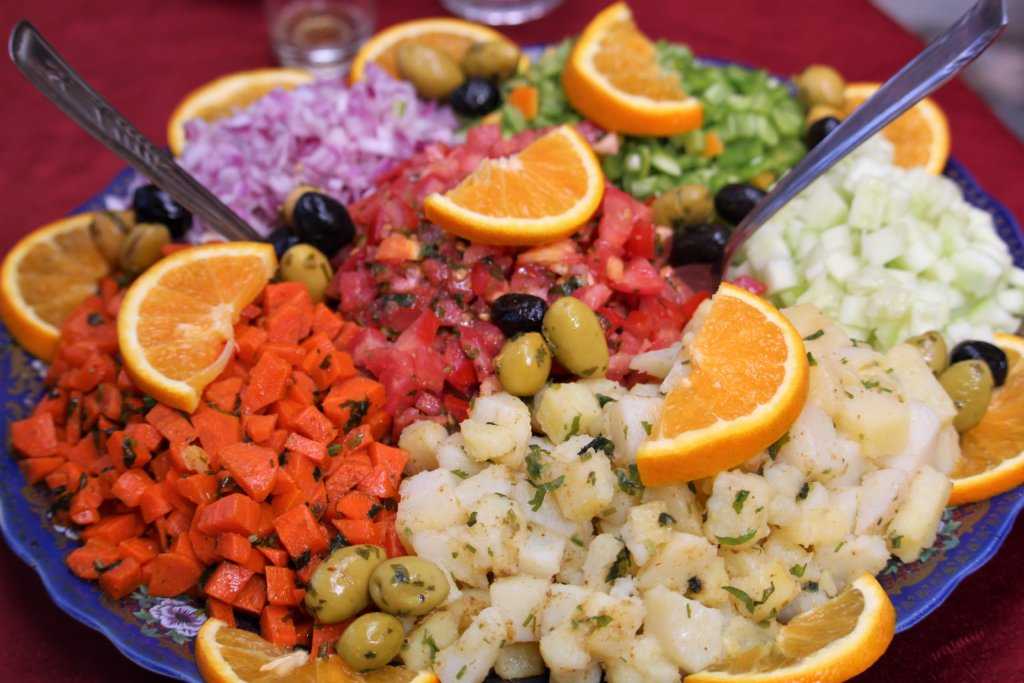
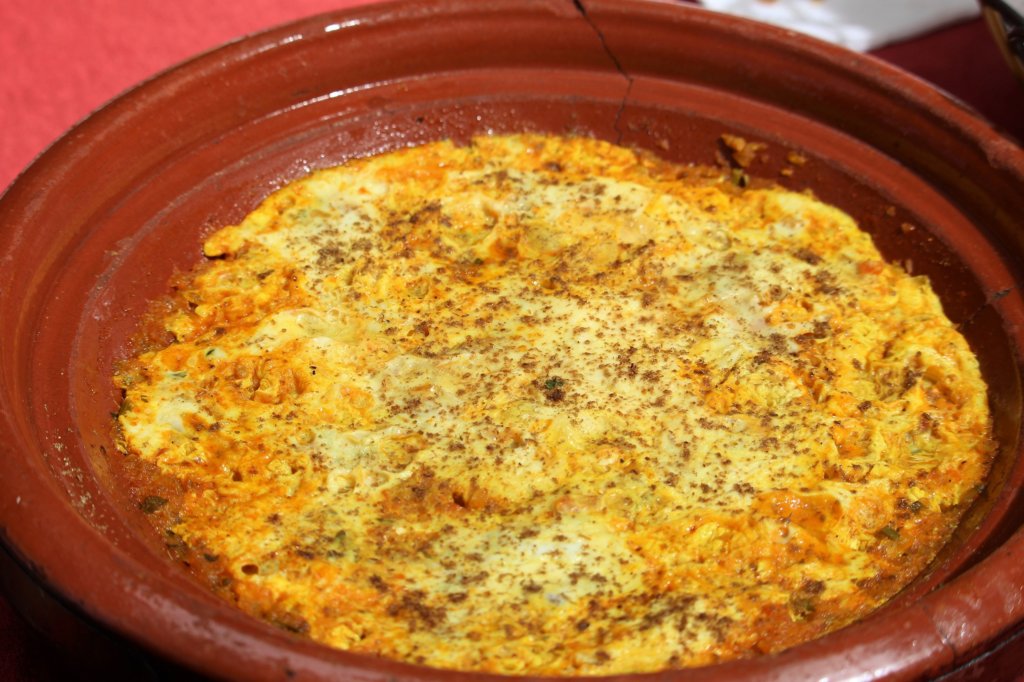
We did do some walking. A few of our group (Mark and I included) stayed local and wandered around the village, whilst others embarked on a more strenuous four-hour hike up the nearest mountain. But the thing I remember most about our time in Aroumd was the food!
In the late afternoon, we had tea and Moroccan doughnuts. After that, it wasn’t long before dinner – a sumptuous feast of harira soup, beef tagine and melon slices! I think we all slept well that night, despite the cold and the need for blankets for the one and only time during our month-long stay in Morocco.
The next morning, we trekked back down to Imlil to rejoin our minibus for the long drive over the High Atlas Mountains into the southern part of the country.
Tizi n’Tichka
We took the N9 from Imlil to Aït Benhaddou, a spectacular road which takes you over Tizi n’Tichka. At 2260 metres, it’s the highest pass in the High Atlas.
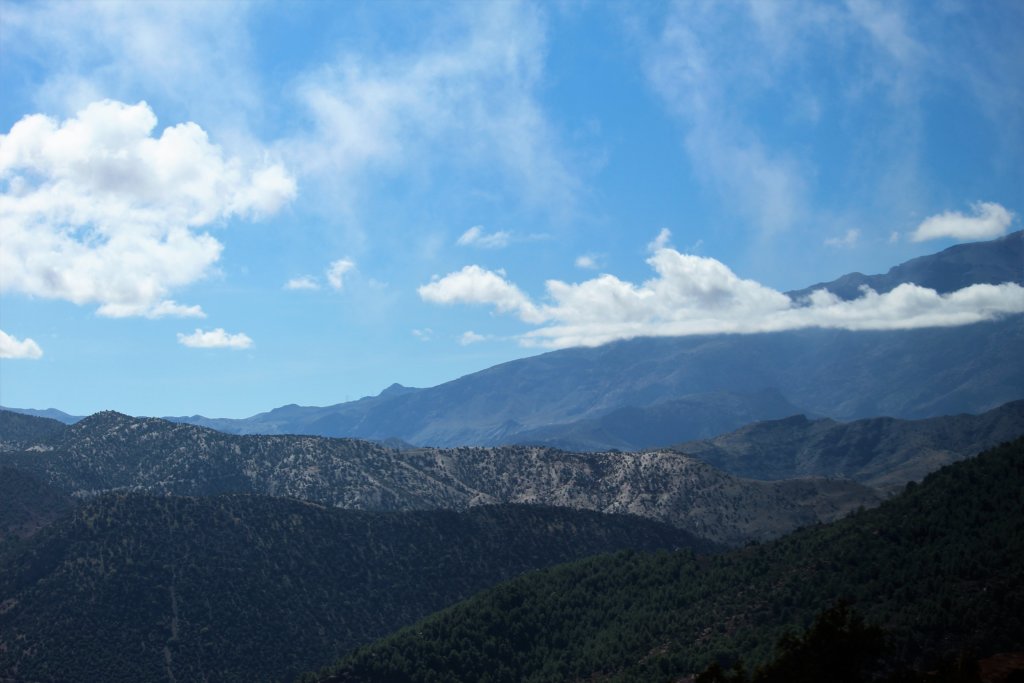
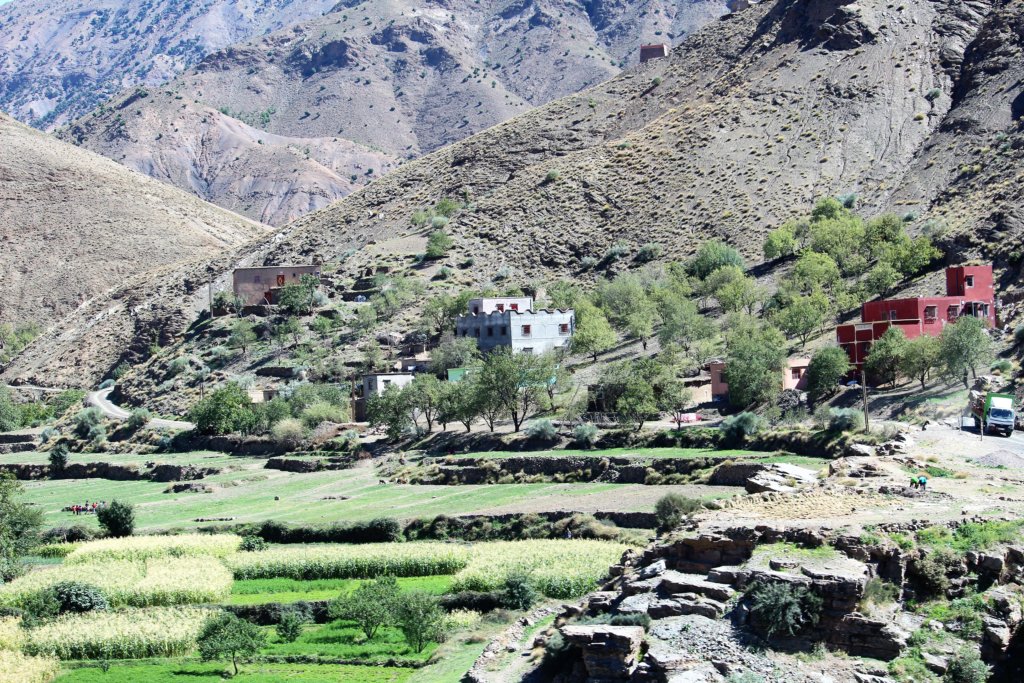
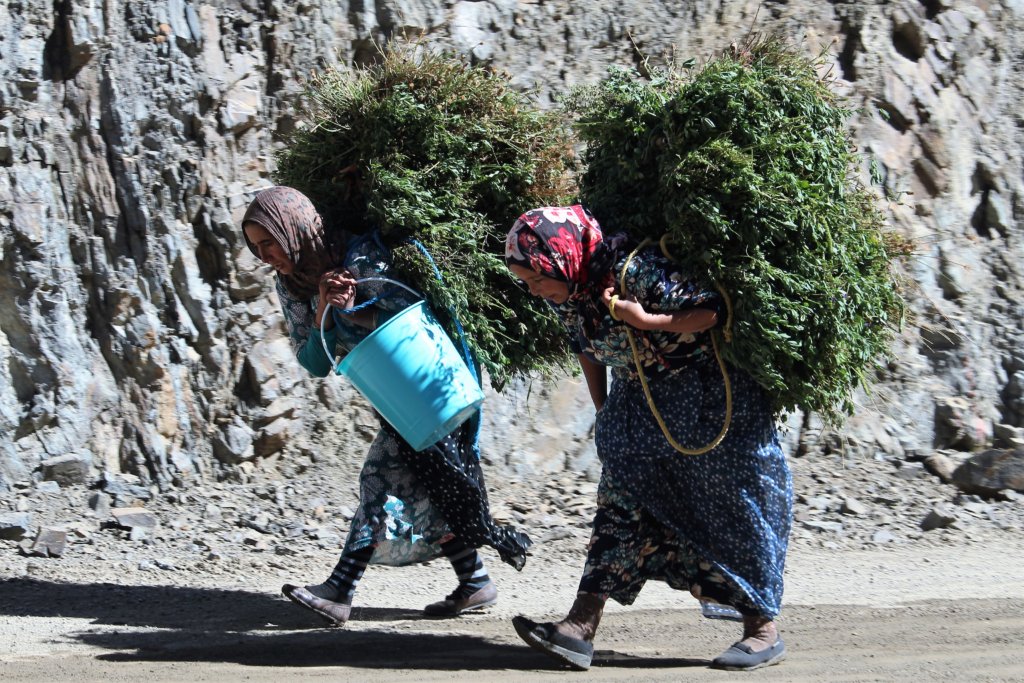
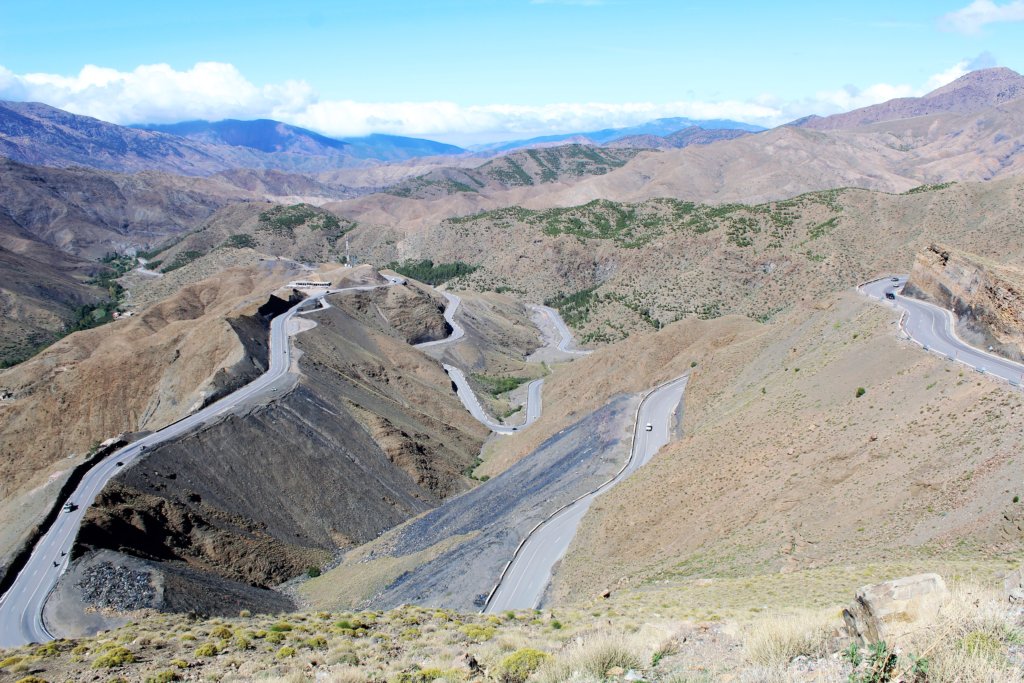
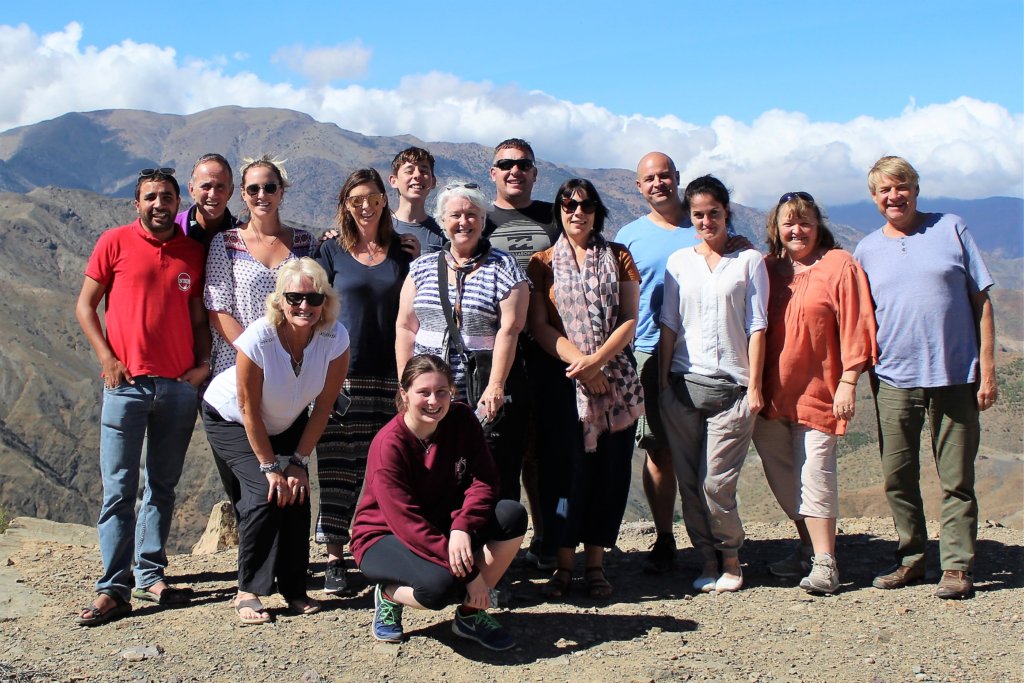
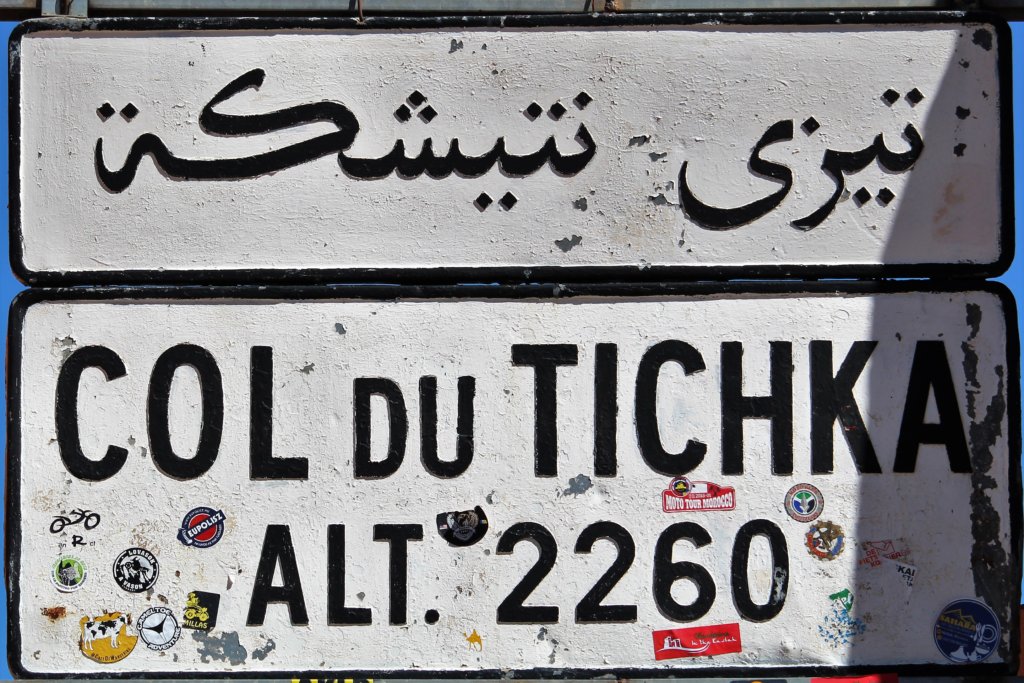
Aït Benhaddou
Aït Benhaddou is an abandoned 11th-century kasbah which has been extensively restored in recent years thanks to its use as a location for movies such as Gladiator, Lawrence of Arabia, Jewel of the Nile, and Jesus of Nazareth. In other places, this rebuilding would have led to the ‘Disneyfication’ of the site, but that’s not really the case here. Yes, there are a few souvenir shops. Yes, brides (particularly from Japan!) come here to pose for their wedding photos. But, the place isn’t overrun with tourists and as you wander through the narrow streets and climb to the top to take in the amazing views, it’s still possible to imagine what Aït Benhaddou was like when it was first built.
We visited the kasbah in the late afternoon to watch the sunset. It was glorious! The setting sun turned the terracotta mud walls rich orange and red. We took our time and enjoyed every last one of the sun’s rays, meaning that we had to use the torches on our phones to illuminate the rather precarious route back to our hotel!
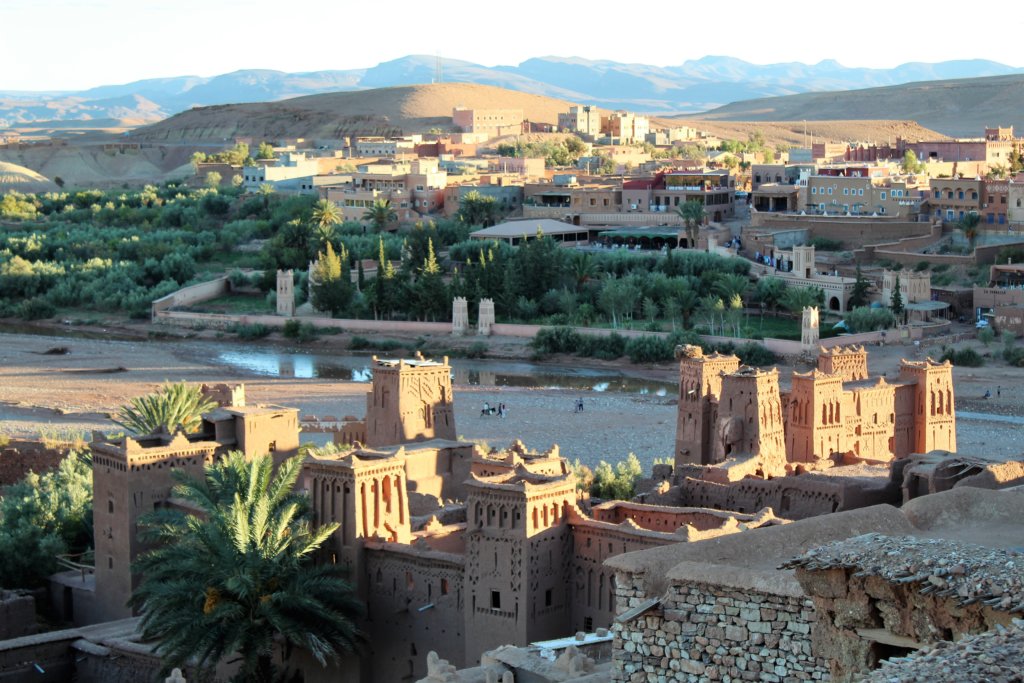
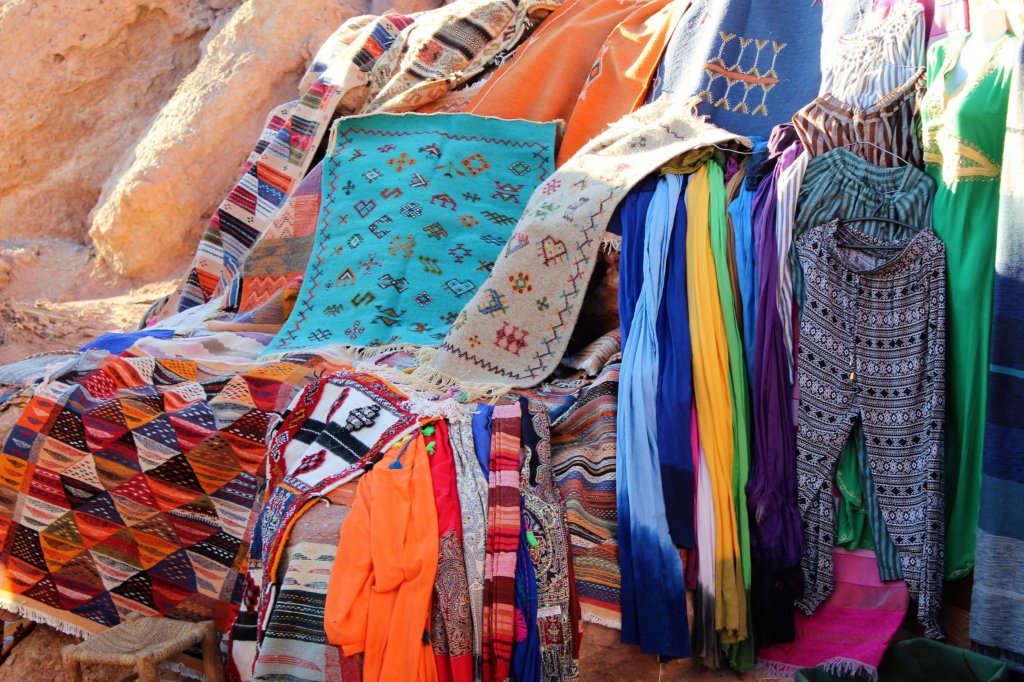
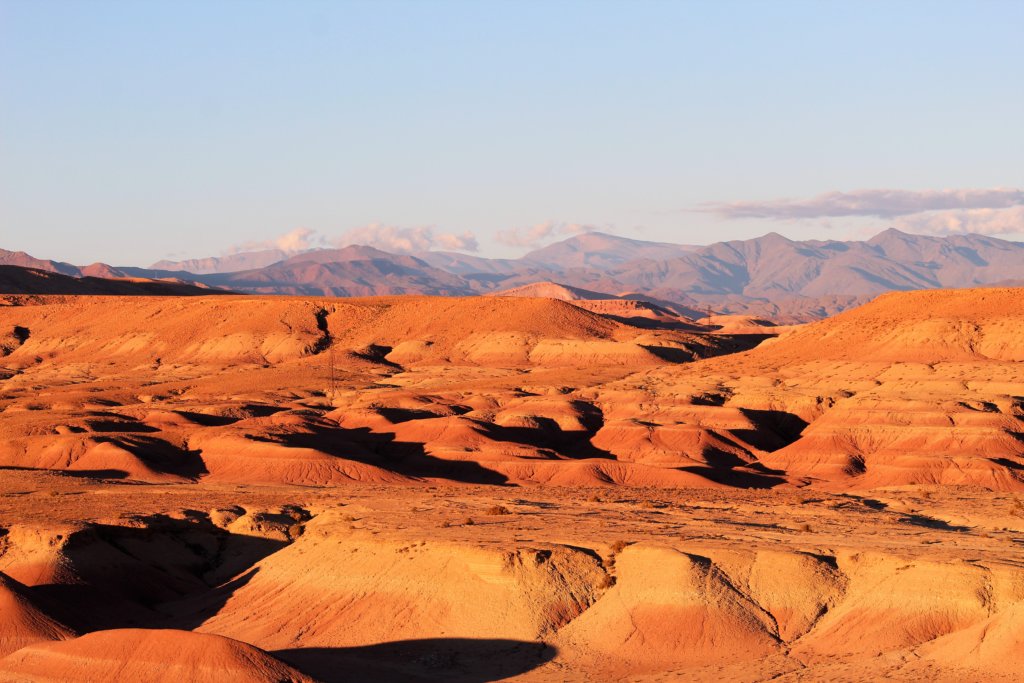
Atlas Film Studios
If you are in Aït Benhaddou, don’t miss a visit to the Atlas Film Studios. No-one else in our group wanted to go, so we got a taxi to take us there. It was well worth the 50 dirham entrance fee, especially as this included a guided tour in English. We were added to a coach load of Japanese tourists who didn’t appear to understand very much. There were, however, a lot of oohs and aahs whenever our guide mentioned the name of a famous Hollywood actor! Their reactions certainly made Mark and I smile!
The studios have been used in the making of a huge number of films including Gladiator, Cleopatra, and Asterix and Obelisk. The sets used for these are still there. It was really interesting to walk around them and learn some of the tricks. For example, the pyramids used in Cleopatra were really quite small, but clever camera angles make them appear full-size on screen. The sets used for the crowd scenes in Gladiator were really cramped – in the finished movie, they look enormous!
Other films made at the studios include The Way Back, The Living Daylights, The Passion, Days of Glory, and The Hills Have Eyes.
While we were there, they were shooting a British film, New Jesus.
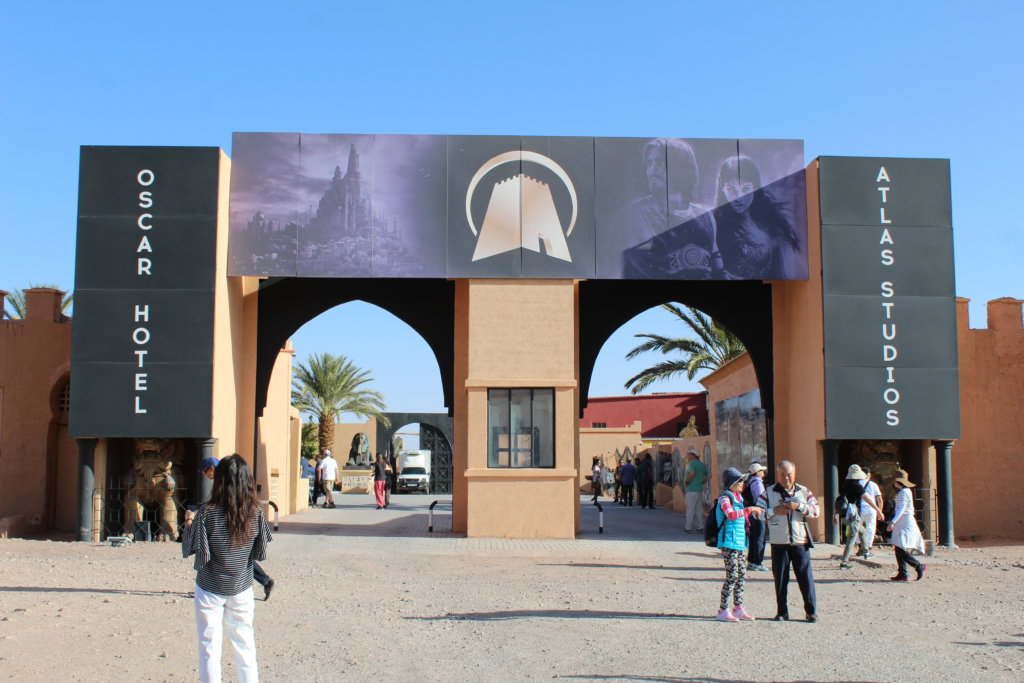
See this gallery for more photos of the fantastic sets in the studios:
Taourirt Kasbah, Ouarzazate
From the film studios, we continued on to the town of Ouarzazate (pronounced war-zazat) to visit the sprawling Taourirt Kasbah. Unlike other kasbahs in the area which have fallen into disrepair, Taourirt has been maintained because it has been used as a backdrop for several Hollywood movies including Gladiator, Sheltering Sky, and Prince of Persia.
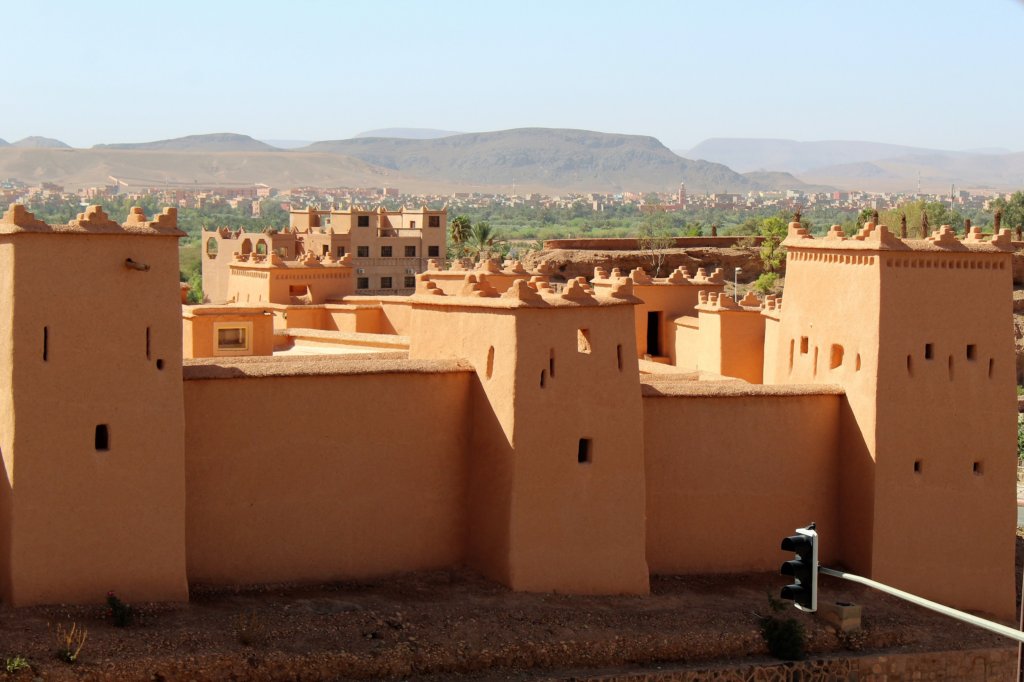
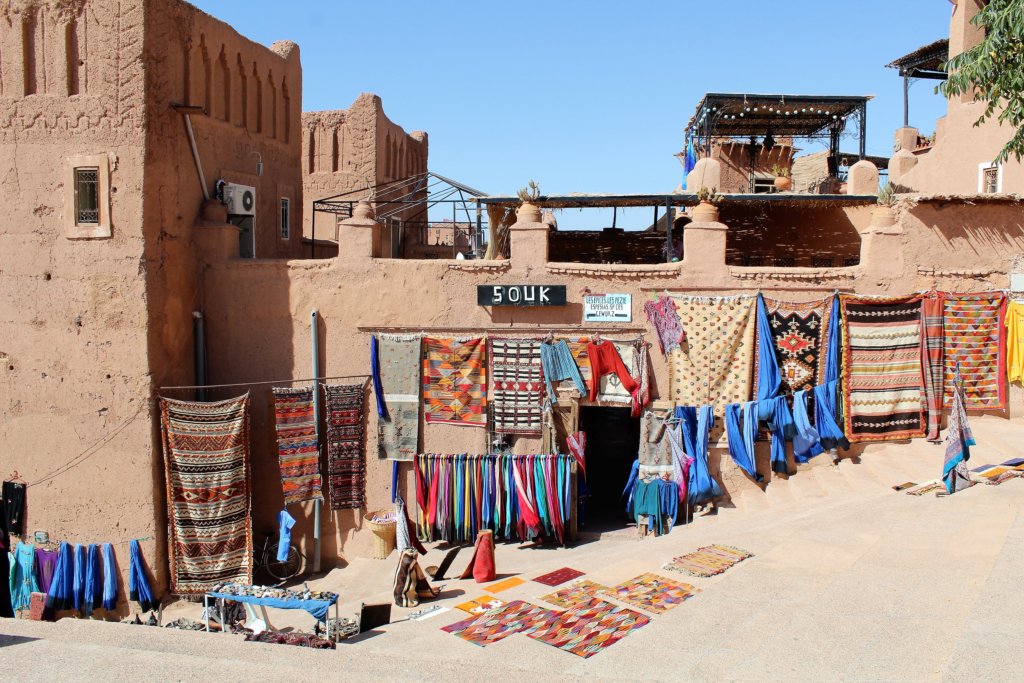
The Drâa Valley
Our visit to the High Atlas Mountains in Morocco ended with a drive through the Drâa Valley to Zagora and on to Tamegroute. The valley is dry and rocky but it does have lush green oases (we had our picnic lunch at one of these) and it’s home to the largest area of date palms in the whole of Africa. We stopped to take photos but it was hard to get a sense of the scale of the place.
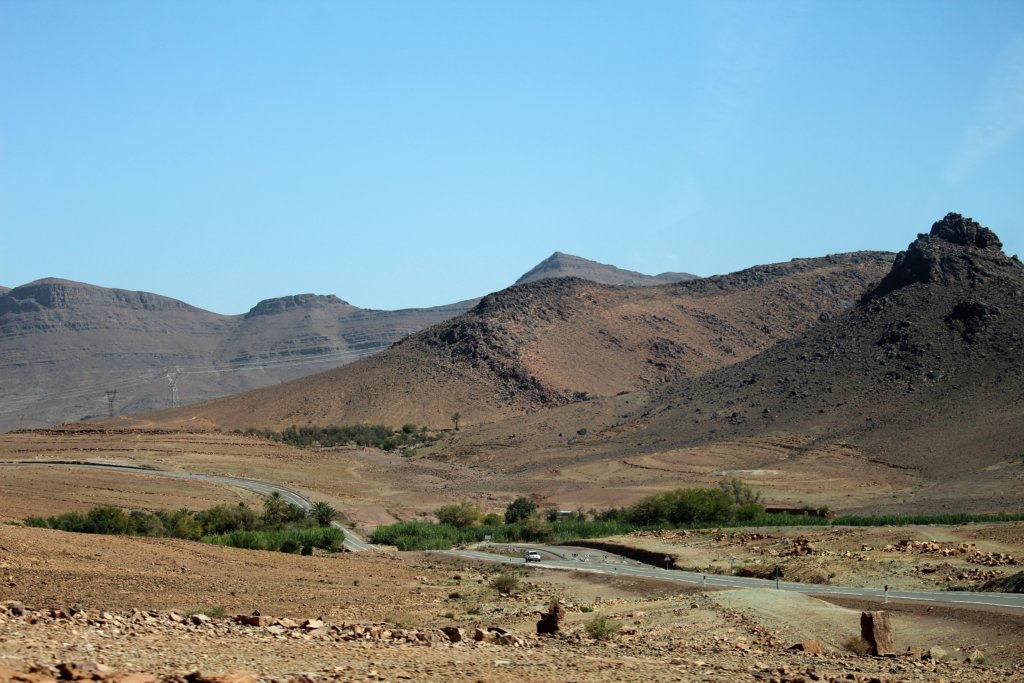
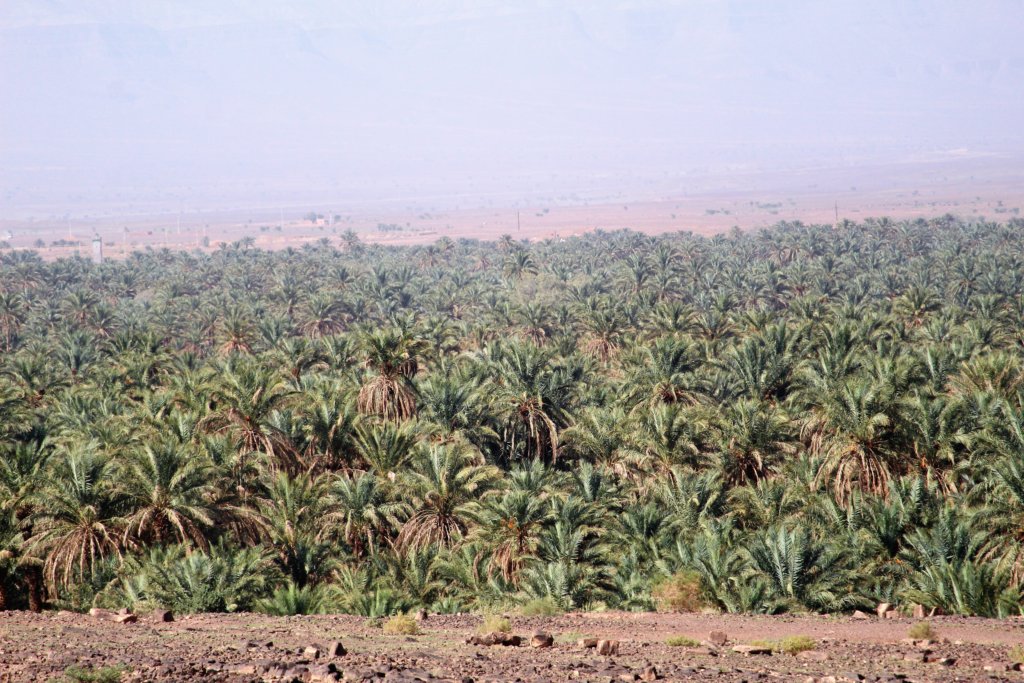
READ MY COMPLETE MOROCCO TRAVEL GUIDE
Further Reading About Morocco
Check out my Morocco colouring books!
Unlike most colouring books on the market, mine, suitable for both adults and older children, are full of line images created from photos I have taken on my travels. This means that they are highly detailed. They are not line drawings where you can colour between every line. The pictures invite you to be creative. Apply a colour wash with watercolour. Use coloured pencils to create texture. Blend colours together. Add detail with a fine ink pen. The choice is yours! Create your own work of art! When you’re happy, remove it from the book. Stick it on the fridge as a reminder of a place you’ve already been to or somewhere that’s on your bucket list. You could even get it framed. Display it on the wall for people to admire.
Here is a selection:
If you like what you’ve read, PIN IT!!
If you’re travelling soon, please use these links!
Are you travelling soon? Use these links when making your bookings. These are the companies we use. It won’t cost you any extra, but we will earn a few pennies to help keep Happy Days Travel Blog going. Thank you!!
- Book your travel insurance with World Nomads (Never leave home without protecting yourself, your trip and your belongings!)
- Book your flight with Skyscanner
- Book your accommodation with Booking.com
- Book a tour with Tour Radar or Intrepid Travel
- Book city tours and activities with Get Your Guide
Disclosure: This post contains affiliate links. If you click through for more information, or to make a purchase, it may result in a small commission coming my way. Please note that there is no extra cost to you associated with this. Thank you so much for supporting my site.
Join our mailing list

Sign up to receive our monthly newsletter. Keep up with what we're doing and be the first to receive special offers and insider tips.

